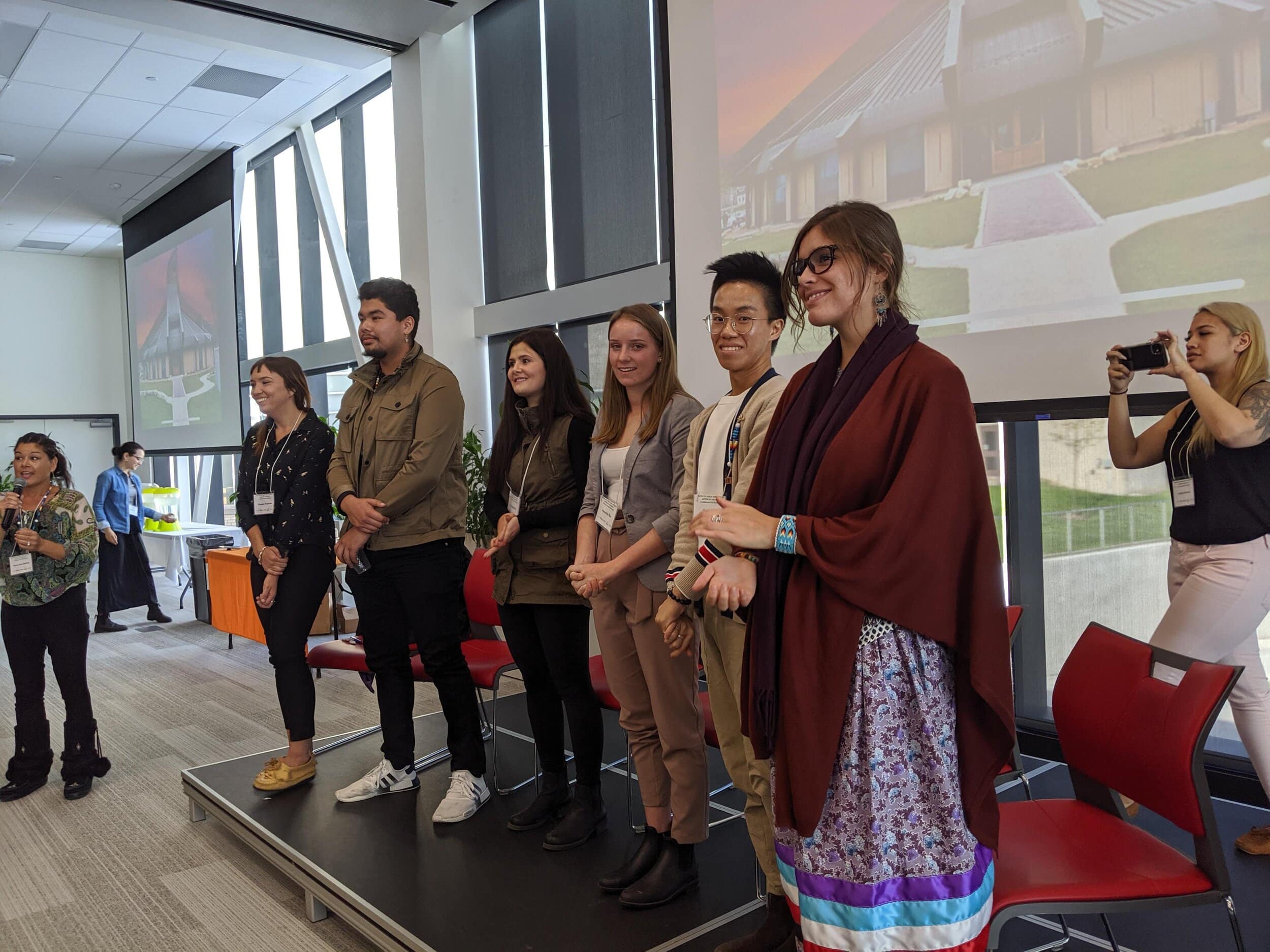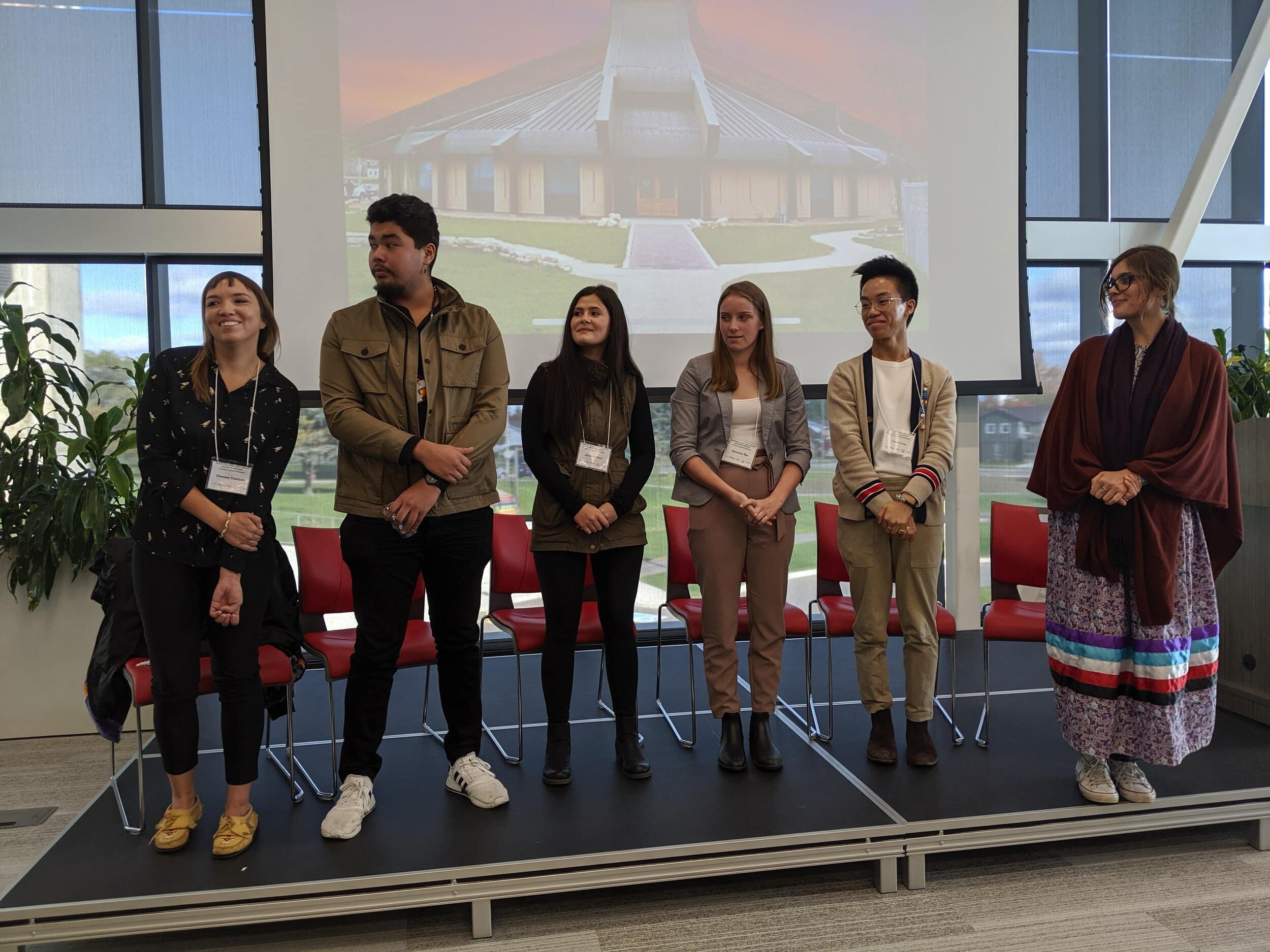
Photo © Ontario Nature
By Shaelyn Wabegijig
In my first couple of weeks working for the IISAAK OLAM Foundation, I was fortunate to attend an amazing conference on Protected Areas and Climate Action, A Cross-Cultural Dialogue. It was a three-day conference, from October 16th-19th, 2019 in Kingston Ontario, taking place in St. Lawrence College. I attended this conference because I am an advocate for Indigenous Protected and Conserved Areas and believe that Indigenous-led conservation is one of the best ways to protect biological and cultural diversity today. I want to offer my deepest gratitude to everyone who made this gathering happen, including the organizers, funders, cooks, cleaners, participants, everyone and every living thing in between. In this blog, I’ll share a few experiences, reflections and key messages from different knowledge keepers who attended the conference.
I want to begin with a quote from one of the main Elders, Marilyn Capreol, whose words resonate with my spirit and is guiding my thoughts in writing this article, “How much time do you think we have?” She asked us in the context of climate action. This set the tone for how serious these conversations and actions are. We really don’t have much time to sort out these crucial and tragic issues that we are all collectively facing.
Her message reminded me of a quote I heard the week before from the author, speaker and renegade academic, Dr. Bayo Akomolafe, who shared words from Nigerian Elders who had a similar message, “Times are urgent, we must slow down.” I invite you to interpret these words for yourself. To me, this means that we cannot continue down this rapid path of destruction, running “business as usual,” that we must slow down and reconsider our collective ways of thinking and being to assess and correct our ways of living together on this planet. These ideas were the most important messages conveyed throughout the conference and haven’t left my mind since.
The first day was a closed session for Indigenous participants to gather their minds and begin this discussion about protected areas and climate action. We opened the day with stories and teachings from our Elders in Ceremony. Indigenous presenters shared their work on addressing the impacts and causes of climate change and how it disproportionately affects their communities. We also heard from each person in the room about who they are, why they had come, and what they wanted to learn during the conference.

Photo © Ontario Nature
When it was Elder Paul Ritchie’s turn to share, he asked, “How do we help non-Indigenous peoples understand and respect natural law?” To me, this is key in addressing climate change. We need all peoples to abide by laws that reflect natural laws, to stay in harmony with natural cycles of life. This requires us to collaborate, commit to healing our broken relationships with creation, with Spirit, and to stop harming the Earth at all costs. This work is essential because we will all be sick if our environment is sick. This was the main message that I took from day one.
The second day, we opened with Ceremony, words from our Elders, and a recap of day one from Clint Jacobs, the president and co-founder of Walpole Island Land Trust. There were presentations from multiple perspectives, panels and small group discussions. I enjoyed Julee Boan’s presentation, as she described how she takes climate action in alliance with Indigenous peoples. I particularly liked how she called attention to consumer culture, capitalism and the disconnection from nature, and how they all come at an enormous cost. She also said that actions create hope, and that a shared understanding of the inherent value of nature can light the path forward.
On this day, Eli Enns’ speech also stood out. He highlighted that Indigenous peoples’ sacred relationships, cultural significance, and interconnection with the lands and waters results in management practices that treat the natural world with respect. He said that how we think about the natural world defines our relationships with it. He used the example of water, either being a sacred and first medicine, or as a commodity and simply knowing it’s chemistry as H2O. The approach of protecting some lands while sacrificing others is part of the problem. He emphasized the need for wise and prudent management of our home, the Earth, and to put the ecosystem back into our concept of the economy. The other striking thing he said is how climate change is Mother Earth healing herself. He warned that we should not be trying to fight climate change, but we need to respect her and her healing processes, and we need to STOP harming our mother.
Elder Marilyn shared a beautiful Water Ceremony with us to begin day three, our last day together. We walked from St. Lawrence College to Lake Ontario Park where we sang songs and prayed for the water and the water beings. We put our minds together to pray for Lake Ontario, and thanked all our ancestors, and those that protected this water. We all said our individual prayers and placed our tobacco and sage into the water. Practicing this Ceremony was healing and reminded us of our sacred responsibilities.
In a youth panel, five of us were asked about ourselves, our work, and our ideas regarding youth engagement. Being a part of this panel felt great because people were listening and our voices mattered. The main view that we all shared is how this is our future we are fighting for, and we want to share our voices at this critical time. I shared that youth in general are ready for this work, we bring a new energy and innovative ideas to these spaces, and we aren’t afraid to fight for these changes because we don’t have a choice.
On day three, we also had a Skype conversation with Danika Littlechild, who is a lawyer from the Ermineskin Cree Nation in Alberta. She shared her thoughts on the challenges and opportunities of Indigenous Protected and Conserved Areas. She spoke to her expertise on policy, how it is not up to date with current conversations and that there is no government policy in place for IPCAs yet. She shared that policies must be co-developed with Indigenous peoples to ensure they don’t do any harm. She echoed what I heard many Elders say: that Western and Indigenous systems can work in parallel as a co-governance process, through Ethical Space (Willie Ermine coined this term. He explains this concept in two videos). Littlechild explained how Western and Indigenous peoples must come together as partners, and that’s how we implement our historic treaty relationships, such as the Two Row Wampum.
Over these three days, Elder Paul Ritchie, Elder Marilyn Capreol, other Elders, knowledge keepers, and participants taught me so much. One highlight that I will close with is Paul Ritchie’s message of how we all must work, move forward, develop, transform, grow, and heal TOGETHER, UNITED. He reminded us that we are not divided, but that all of our families share one future. It is our responsibility to pass on this knowledge and connect with our Elders, those sacred areas, and with the lands and waters. This gathering helped me on my journey, as I’m sure it did for many others. Chi miigwetch!!
